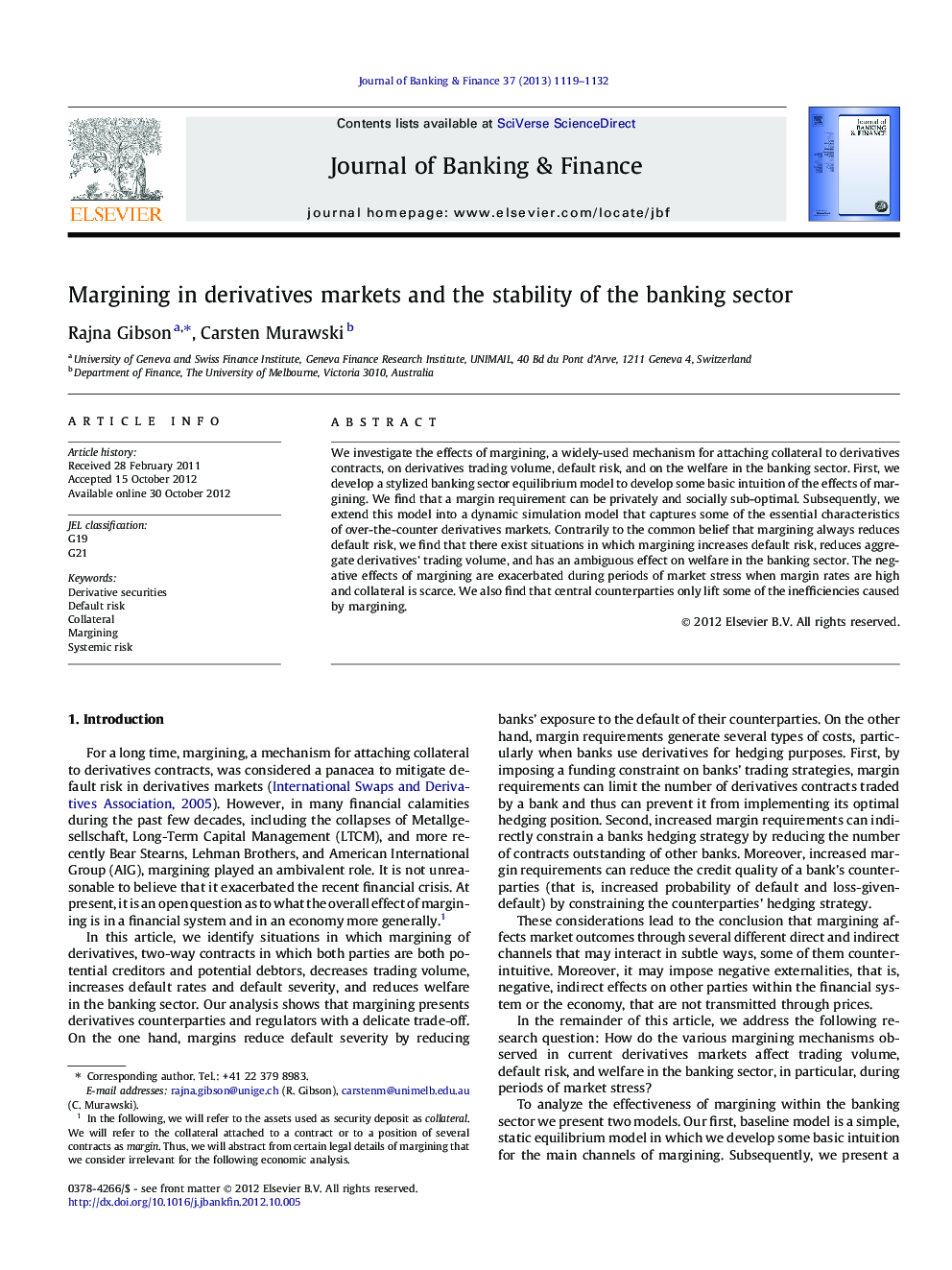| Article ID | Journal | Published Year | Pages | File Type |
|---|---|---|---|---|
| 5089673 | Journal of Banking & Finance | 2013 | 14 Pages |
We investigate the effects of margining, a widely-used mechanism for attaching collateral to derivatives contracts, on derivatives trading volume, default risk, and on the welfare in the banking sector. First, we develop a stylized banking sector equilibrium model to develop some basic intuition of the effects of margining. We find that a margin requirement can be privately and socially sub-optimal. Subsequently, we extend this model into a dynamic simulation model that captures some of the essential characteristics of over-the-counter derivatives markets. Contrarily to the common belief that margining always reduces default risk, we find that there exist situations in which margining increases default risk, reduces aggregate derivatives' trading volume, and has an ambiguous effect on welfare in the banking sector. The negative effects of margining are exacerbated during periods of market stress when margin rates are high and collateral is scarce. We also find that central counterparties only lift some of the inefficiencies caused by margining.
⺠Margining is a common mechanism for attaching collateral to derivatives contracts. ⺠It can increase default risk and reduce trading volume in a market. ⺠The negative effects are exacerbated during periods of market stress. ⺠Margins also impose externalities and can be privately and socially sub-optimal. ⺠Central counterparties only lift some of the inefficiencies caused by margining.
